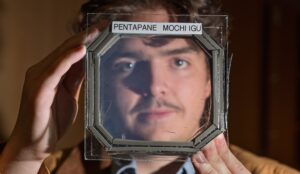
In an intriguing breakthrough, scientists at the Stowers Institute for Medical Research have pinpointed the precise location where human chromosomes break and recombine to form Robertsonian chromosomes. This discovery, led by Postdoctoral Research Associate Leonardo Gomes de Lima, Ph.D., and published in Nature, sheds light on a genetic mystery that has puzzled researchers for years.
Robertsonian chromosomes occur in about one out of every 800 people, resulting from the fusion of two chromosomes. While carriers often remain unaware of their unique genetic makeup, they can face challenges such as infertility or increased risk of miscarriages. The new findings not only explain how these rearrangements form and remain stable but also suggest that previously disregarded repetitive DNA, once labeled as “junk,” plays a pivotal role in genome organization and evolution.
Unraveling the Chromosomal Mystery
Jennifer Gerton, Ph.D., a lead author and Stowers Institute Investigator, emphasized the significance of this discovery: “This is the first time anyone has shown where this exact DNA breakpoint occurs. It opens the door to understanding how chromosomes evolve in a way that we had no appreciation for before.” The research team utilized advanced DNA sequencing technology, known as long-read sequencing, to produce the first complete sequences of Robertsonian chromosomes. This method, which revolutionized genome studies in 2022, allowed scientists to navigate repetitive DNA sequences that had previously confounded older technologies.
Upon comparing the sequences of three human Robertsonian chromosomes to normal chromosomes, the researchers identified a common breakpoint within a specific repetitive DNA sequence called SST1. Gerton noted, “That’s never been shown before—in humans or in any other species.”
The Role of Repetitive DNA
In collaboration with experts from the National Human Genome Research Institute and the University of Tennessee Health Science Center, Gerton’s team discovered that highly repetitive DNA sequences, SST1s, are the sites where breakpoints occur. These sequences, located near chromosome centromeres, are crucial to the fusion process. The research revealed that when SST1 sites converge within a cell’s nucleolus, their proximity can trigger a merger, resulting in a Robertsonian chromosome.
Gerton explained, “Robertsonian chromosomes form when two long arms fuse, and the short arms are lost. That leaves 45 chromosomes instead of 46—and sometimes lining up 45 with 46 doesn’t work very well, which can result in infertility.” The study also highlighted how the orientation of SST1 on chromosome 14 facilitates the fusion with either chromosome 13 or 21, ensuring the resulting Robertsonian chromosomes carry nearly all genetic material from both original chromosomes.
Implications for Genetic Counseling
With this newfound understanding, scientists can better identify and comprehend the functioning of Robertsonian chromosomes. Gerton expressed hope for future applications: “One day, we may be able to give carriers better genetic counseling and better options.” The stability of these fused chromosomes, despite carrying two centromeres, is attributed to only one being active, preventing them from being pulled apart during cell division.
Broader Implications Across Species
Robertsonian chromosomes are not exclusive to humans; they are present in various animals and plants, having been first discovered in grasshoppers. This research provides insights into their formation across species. Gerton remarked, “Now that we know how these chromosomes form in humans, it gives us insight into how they occur broadly in nature.”
Interspecies comparisons revealed that while chimpanzees and bonobos possess the SST1 sequences, their arrangement differs from humans, suggesting a unique evolutionary path. Gomes de Lima speculated on the broader implications: “It really got us thinking about the role these repetitive DNA sequences play in shaping the genome and potentially creating new species.”
As the research community digests these findings, the study’s authors plan to delve deeper into the evolutionary story that these repetitive DNA sequences tell. Gerton concluded, “It’s clear that there’s a story there, and that’s what we plan to study next.”







